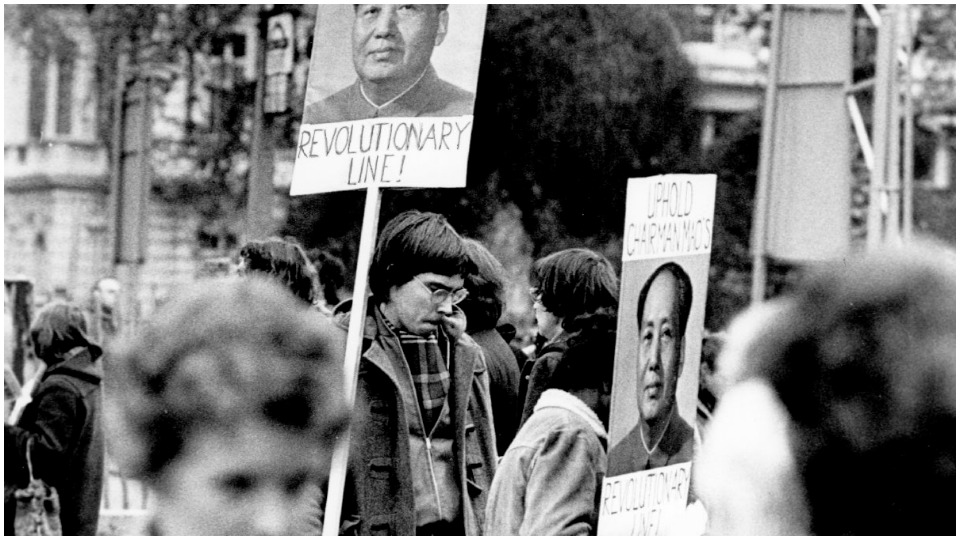
During the 1960s and 1970s, the Federal Bureau of Investigation infiltrated, spied on, and harassed progressive and radical organizations and individuals across the country, often employing informants and provocateurs to disrupt, disorganize, and discredit leftist movements and groups.
FBI surveillance and the use of paid informants were nothing new to the U.S. domestic security apparatus. While much of the political repression of the 1950s Red Scare and McCarthy era—a period when political repression was largely directed at the Communist Party USA and Communist-led groups like the Civil Rights Congress, the Council on African Affairs, and the International Workers Order—would eventually be declared unconstitutional (the Smith and McCarran Acts, specifically), by the early 1960s a newly invigorated repressive apparatus had emerged.
In A Threat of the First Magnitude: FBI Counterintelligence & Infiltration From the Communist Party to the Revolutionary Union, 1962-1974, by Aaron J. Leonard and Conor A. Gallagher, we get a bird’s-eye view of just some of the nefarious and illegal ways in which the FBI utilized its massive domestic repressive security apparatus, particularly through the use of “informant penetration…[a] key element of counterintelligence.”
The FBI’s COINTELPRO—counterintelligence program—was not only aimed at the Communist Party USA but also at an array of New Left, New Communist Movement organizations, including Students for a Democratic Society, various Maoist groups like the Revolutionary Union, as well as Black Power groups like the Black Panther Party.
The results were mixed: FBI informants often ended up recruiting other FBI informants who were unknown to each other. This was particularly true of many of the small ultra-left groups that emerged during this time. According to FBI informant records, many of these groups, like the so-called Ad Hoc Committee for Scientific Socialist Line, which sprang “from the counter-intelligence imagination of the FBI,” had but a handful of members, many of whom were FBI informants.
Unwittingly or not, many of the activists recruited into these ultra-left groups worked to discredit prominent Communists, like CPUSA general secretary Gus Hall, with material provided by the FBI. The CPUSA, as one of the oldest and most influential left groups in the U.S., was often targeted.
For example, Maoists helped distribute “[Gus] Hall Must Fall” cards at the 1966 Philadelphia May Day Rally. As Leonard and Gallagher note, the FBI “paid two ‘vagrants’ $1” to pass out the cards and then “sought to make it seem that the Progressive Labor Party—formed by two former CP members that came to support Mao’s China—were behind” the attempt to sow discord and resentment.
One of the more illuminating aspects of A Threat of the First Magnitude is what it tells us about how some leftists saw themselves and their organizations during this period, a mix of exaggerated self-importance and acknowledged isolation. 
Leonard and Gallagher quote Richie Perez, a leader of the Young Lords and later the Puerto Rican Revolutionary Workers Organization (PRRWO): “We began to convince ourselves that we were the greatest threat to American imperialism. We were down to about 40 people [members].”
The PRRWO would “split into armed factions and violence became its own end,” it was added. Perez and his wife “were kidnapped by an opposing faction and tortured” as suspected informants—a consequence of zealous, irrational ultra-leftism, and FBI manipulation. Many ultra-left groups, like PRRWO, would self-implode with the help of the FBI.
If FBI records are to be trusted, the use of informants as an investigative and disruptive tool would change dramatically toward the end of the 1970s. As Leonard and Gallagher note, the “Bureau went from 21,414 open investigations in July 1973 to 4,868 in March 1976. By May 1978…the Bureau was ‘practically out of the domestic security field,’” which, they add, was “an overstatement to be sure.” This development occurred because of Congressional revulsion at the abuses of the Nixon administration symbolized by the Watergate affair.
A Threat of the First Magnitude is a welcome introduction to anybody interested in a concise and readable overview of the FBI’s misuse and abuse of its power, domestic surveillance and the intentional disrupting of leftist organizations during the 1960s and ’70s.
Aaron J. Leonard and Conor A. Gallagher
A Threat of the First Magnitude: FBI Counterintelligence & Infiltration From the Communist Party to the Revolutionary Union, 1962-1974
Repeater Books, 2018, 330 pages









Comments